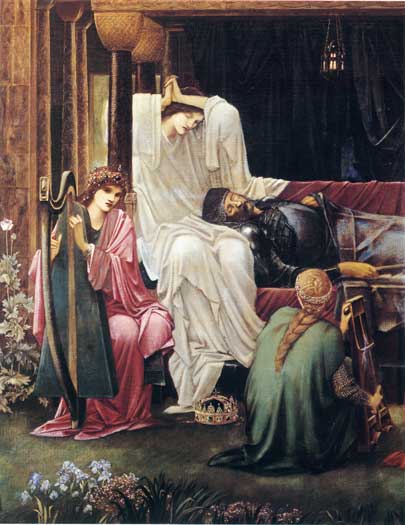In 1933 the Tate Gallery held a modest exhibition to mark the centenary of the birth of the eminent Victorian painter, Edward Burne-Jones (1833-1898). The occasion elicited some poignant reflections from Graham Robertson, a good friend of Burne-Jones during the artist’s later years. “It was rather sad,” he noted at the private view “– a little crowd of forlorn old survivals paying their last homage to the beauty and poetry now utterly scorned and rejected.”
Even then, the reputation of Victorian art still had a lot further to fall. When Burne-Jones’s daughter, Margaret McKail, died in 1953, sheaves of his drawings were put up for auction by the executors of her estate but sold for next to nothing. Ten years after that, Burne-Jones’s largest and most ambitious picture, The Sleep of Arthur in Avalon – the magnum opus on which he had worked for eighteen years, until the day of his death – was quietly sold abroad. There were no protests, no petitions. Christie’s, which had estimated the work at between £2,000 and £5,000, knocked it down for a mere 1,600 guineas to the dealer Peter Nicholson, who was acting as agent for Luis Antonio Ferre, a Puerto Rican engineer and industrialist. Ferre, a who later served as third Governor of the Commonwealth of Puerto Rico, was building an art collection for a new museum on the island; and in 1965, Burne-Jones’s enormous painting was duly installed in a custom-built gallery in the Museo de Arte de Ponce.
 Even after a widespread revival of interest in Victorian art, which started towards the end of the 1960s and has gathered momentum ever since, it long seemed unlikely that the picture would ever be seen in
Even after a widespread revival of interest in Victorian art, which started towards the end of the 1960s and has gathered momentum ever since, it long seemed unlikely that the picture would ever be seen in


